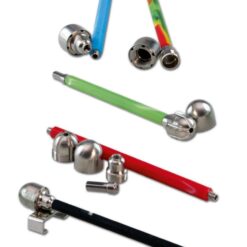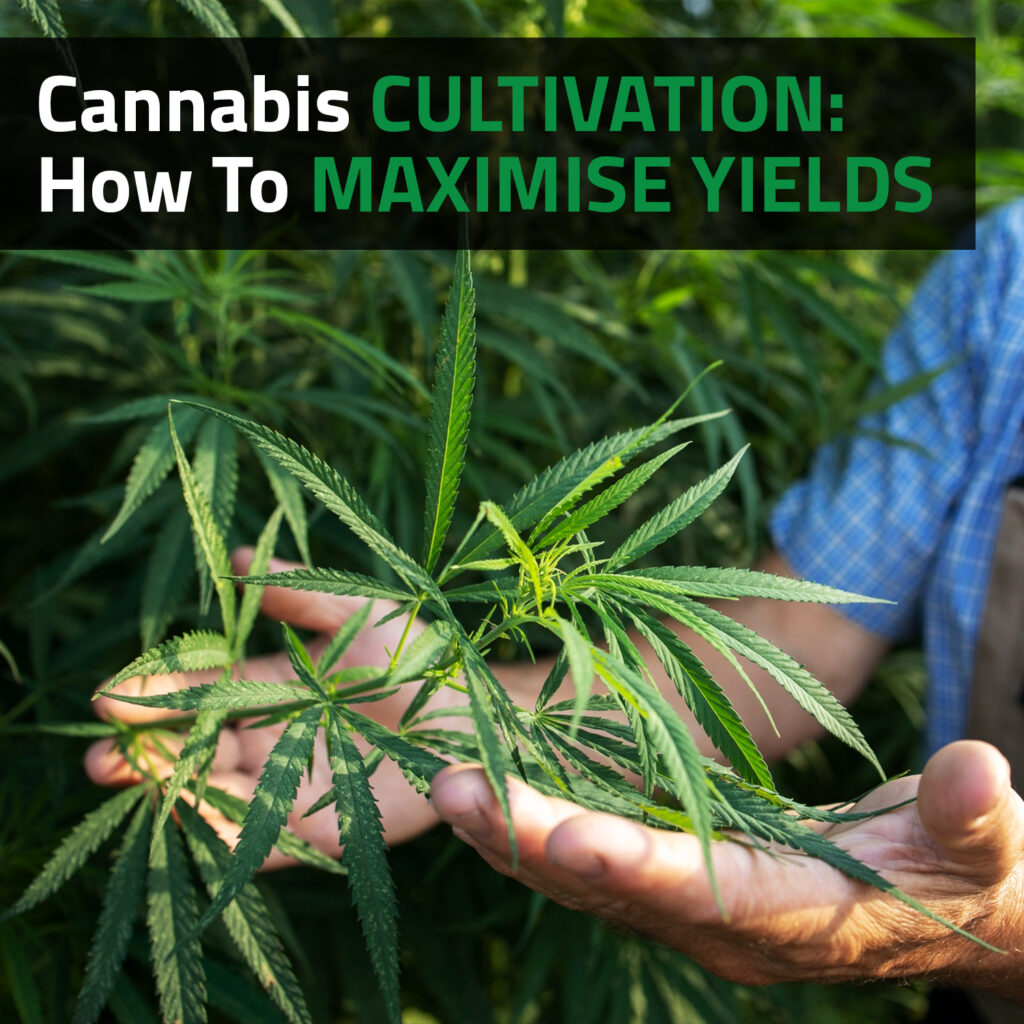In the competitive landscape of cannabis cultivation, maximising yields while maintaining premium flower quality is not just a goal – it is a necessity. Whether you are cultivating at a commercial scale or perfecting your indoor grow, implementing a strategic, science-based approach across every aspect of your operation can mean the difference between average returns and industry-leading harvests.
To consistently produce top-tier cannabis at scale, growers must focus on five critical areas: lighting, pest and pathogen management, irrigation, environmental control, and plant genetics. This article outlines how to fine-tune each of these factors for optimal results, plus additional considerations that will take your cultivation practices to the next level.
Optimise Light Intensity And Spectrum
Lighting plays one of the most significant roles in cannabis growth, directly influencing yield, potency, and plant morphology. Two key lighting variables – intensity and spectrum—must be carefully balanced throughout the plant’s life cycle.
Light Intensity
Cannabis plants respond to light intensity differently depending on their growth stage and cultivar. During early vegetative growth, lower light levels prevent stress and allow young plants to develop strong roots and stems. As plants enter the flowering phase, gradually increasing light intensity can drive larger, more resinous buds.
However, more light is not always better. Research shows that certain cultivars thrive under higher photosynthetic photon flux density (PPFD) levels—up to 1800 µmol/m²/s – while others may experience reduced quality when pushed beyond their threshold. Tailoring light intensity to each strain ensures optimal development without compromising flower integrity.
Light Spectrum
The spectral composition of your lighting also affects plant growth and quality:
- Vegetative stage: A spectrum rich in broadband blue light fosters compact, sturdy plants. Narrow-band blue or red light, on the other hand, encourages vertical growth.
- Early flowering: A cooler spectrum heavy in blue light can control stretch, especially in low-clearance grow rooms. Shorter strains may benefit more from red-heavy light early in flower.
- Mid-flower: A warmer, red-dominant spectrum significantly boosts bud production. Avoid increasing blue light at this stage, as it may reduce yield.
- Late flower: Cooler lighting cues the plant to focus on ripening, enhancing resin and terpene development. Warmer spectrums during this stage may misdirect the plant’s energy toward further growth instead of maturing existing buds.
Prevent Pests And Pathogens
One of the most devastating threats to yield and quality is pest or pathogen infestation. Without a robust integrated pest management (IPM) strategy, growers risk crop loss, reduced cannabinoid content, and damaged brand reputation.
Key Cannabis Pathogens To Watch Out For
- Hop Latent Viroid (HLVd): This silent pathogen reduces plant vigour, trichome production, and yield. HLVd spreads through tools, clones, and direct contact, requiring qPCR testing and stringent sanitation for early detection and control.
- Fusarium: A fungal invader that attacks roots, stems, and leaves, often resulting in total plant loss. Fusarium also produces harmful mycotoxins, rendering even surviving plants unusable.
- Pythium: Known for causing root and crown rot, this soil-borne fungus thrives in damp conditions. Pythium spreads through water, contaminated soil, insects, and irrigation equipment.
Dial In Irrigation Strategy
Water management is a delicate balance. Overwatering can suffocate roots and create breeding grounds for pathogens, while underwatering leads to nutrient deficiencies, pH imbalances, and stunted growth.
Drip irrigation systems paired with environmental monitoring tools (like EC and soil moisture sensors) can provide precision watering tailored to each growth phase.
Understanding Shot Size And Crop Steering
“Shot size” refers to the amount of water delivered per irrigation event, usually expressed as a percentage of the substrate volume:
- 1–3% shot size: Encourages vegetative growth by keeping the substrate moist. This supports root expansion and biomass accumulation.
- 4–6% shot size: Induces a generative response by allowing drybacks between feedings, steering the plant toward flower production.
Adjusting frequency and volume according to stage-specific needs boosts plant structure, cannabinoid concentration, and overall yield.
Master The Environment
Cannabis plants are highly sensitive to environmental variables, and controlling these with precision throughout the growth cycle is essential to maximising yield and preserving flower quality.
Temperature Control
- Vegetative stage: 28–30°C encourages robust root and canopy growth.
- Early flowering: Lower to around 27°C to manage plant stretch.
- Mid-flower: Maintain around 25°C to support flower development.
- Late Flower: Gradually decrease to 21–24°C to enhance colour, resin, and terpene retention.
Humidity Levels
- Vegetative: High humidity (65–75%) supports transpiration and nutrient uptake.
- Early to mid-flower: Decrease humidity to 55–60% to prevent mold.
- Late flower: Reduce further to 45–50% to preserve bud integrity.
CO₂ Supplementation
Boosting CO₂ levels enhances photosynthesis and overall plant growth:
- Vegetative: 600–900 ppm supports rapid development.
- Flowering: Match CO₂ levels 1:1 with light intensity in micromoles.
- Late flower: Gradually taper CO₂ as light intensity drops to mimic natural senescence.
Air Circulation
Proper airflow regulates temperature and humidity, distributes CO₂ evenly, and deters pests. High-quality fans, exhaust systems, and HEPA filters are key investments for maintaining a clean and productive grow environment.
Improve Plant Genetics
No matter how advanced your cultivation techniques are, genetics set the ceiling for yield, potency, and resilience. Breeding your own high-performing cultivars ensures predictable results and consistent quality across multiple harvests.
Look for genetics that exhibit:
- High yield potential
- Resistance to pests and disease
- Strong cannabinoid and terpene profiles
- Structural integrity and predictable flowering times
Accelerating Genetic Development
Traditional breeding methods are time- and space-intensive. However, modern technologies can streamline the process:
- Genomic Sequencing: Identify genetic markers associated with desired traits.
- qPCR Testing: Rapidly screen seedlings for favorable genes, reducing the number of plants needed for trials.
- Genetic Engineering: Introduces foreign genes for specific benefits, such as disease resistance.
- Genetic Editing (e.g., CRISPR-Cas9): Allows for precise modifications to existing DNA without introducing foreign material.
Both genetic engineering and editing can fast-track the development of cultivars uniquely suited to your operation, giving you a proprietary edge in the market.
Maximising cannabis yield is a complex but achievable goal with the right tools, knowledge, and commitment to continuous improvement. From optimising light conditions and dialing in irrigation strategies to mastering environmental controls and refining plant genetics, each technique plays a vital role in boosting both quantity and quality.
As the cannabis market becomes more competitive, growers who invest in these strategies will be better positioned to scale operations, improve profitability, and deliver consistently exceptional flower that keeps customers coming back.
Recommended products
-
Black Leaf – “Wand Vape” Steel Hand Vaporizer
R375.00 -
PUFFCO Peak Pro Vaporizer
R7,500.00 -
DAVINCI MIQRO-C Vaporizer
R2,750.00 -
DynaVap – “M7” Vaporizer
R1,750.00










